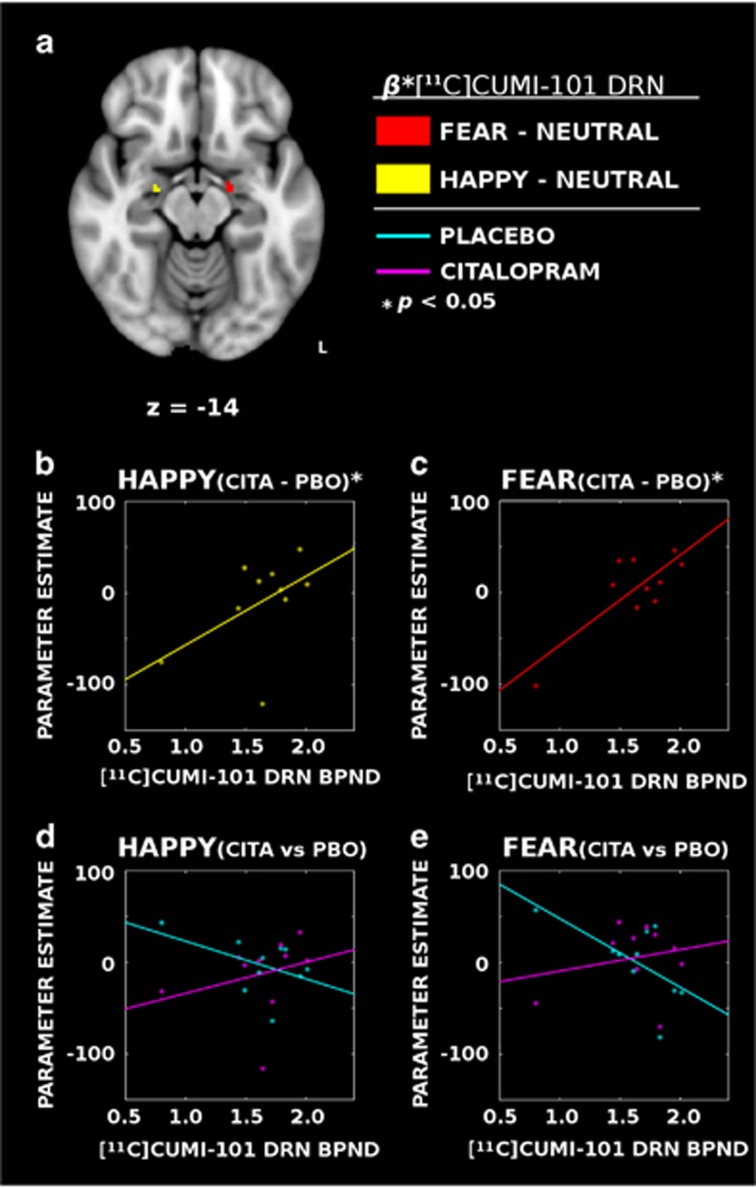Figure 2.
Dorsal raphe nucleus (DRN) 5-HT1A availability was positively associated with the degree of modulation induced by citalopram infusion in the amygdala. (a) PET [11C]CUMI-101-binding estimates demonstrated a functionally lateralized positive association with activity in the left amygdala between the response to fearful faces and DRN 5-HT1A availability (red) and the right amygdala showing an association with happy faces (yellow). (b and c) Citalopram (CITA) minus placebo (PBO) differences show that individuals with greater DRN 5-HT1A availability have reduced citalopram-induced modulation of the amygdala to happy (yellow) and fearful (red) faces in the right and left hemispheres, respectively. (d and e) Same as panels (b and c) but with citalopram and placebo data presented separately. Whereas individuals with less DRN 5-HT1A availability show heightened amygdala responses during placebo infusions (cyan), the association largely disappears with citalopram (magenta), suggesting that individual differences in the response of the amygdala to emotional content is associated with differences in DRN 5-HT1A availability. A full color version of this figure is available at the Neuropsychopharmacology journal online.

